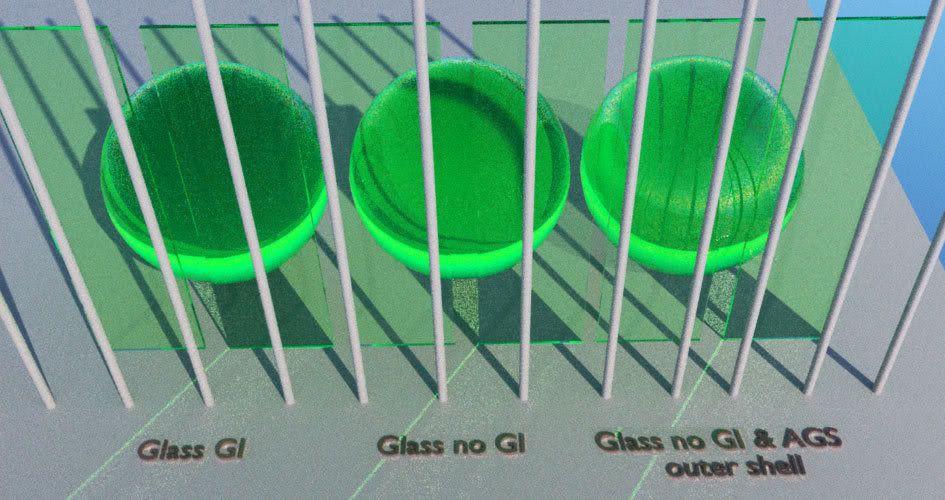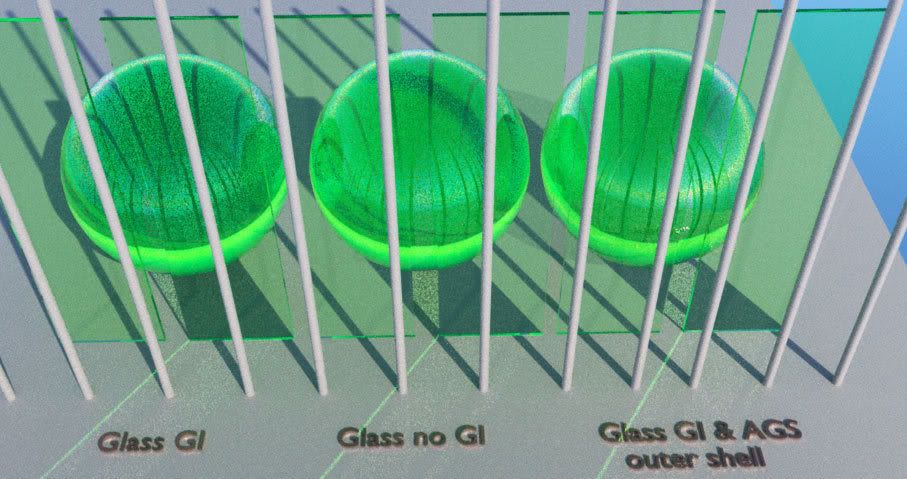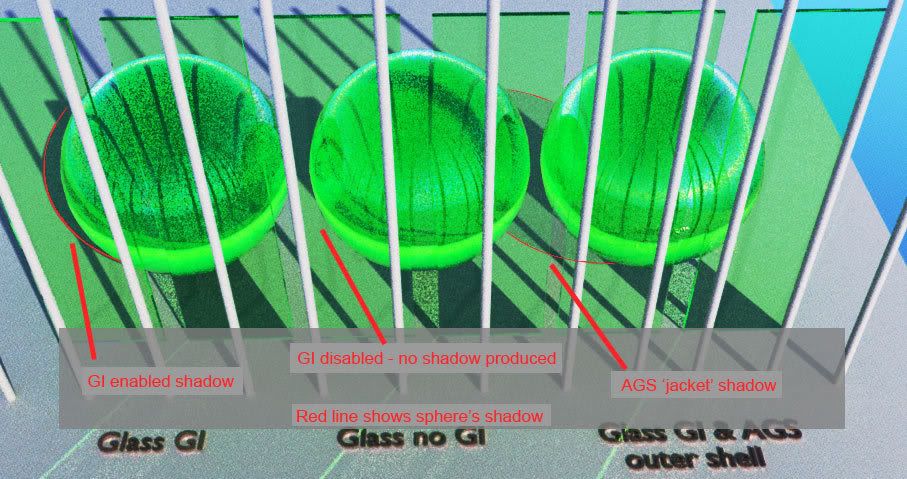Sunlight through glass - Results in first post
Posted: Thu Sep 13, 2007 9:35 pm
Condensed thread, all the working results in one post:-
Test:-
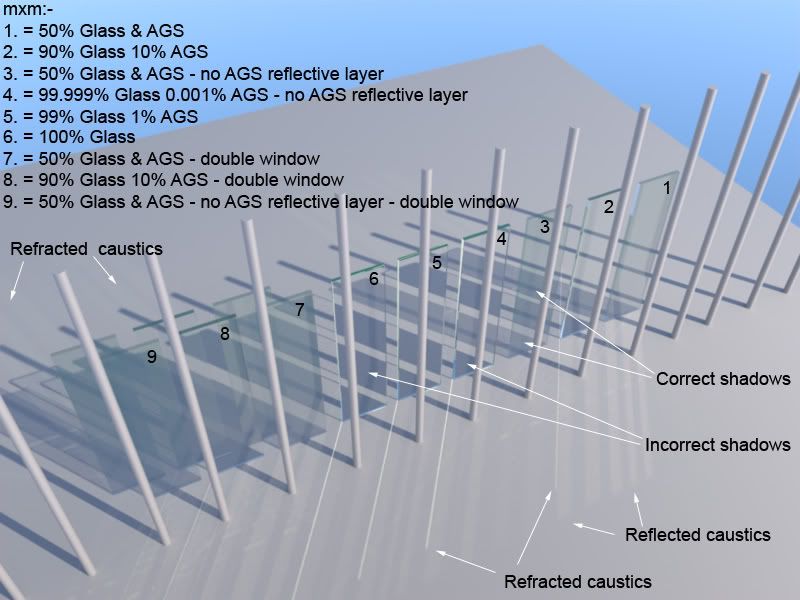
Comparison:-
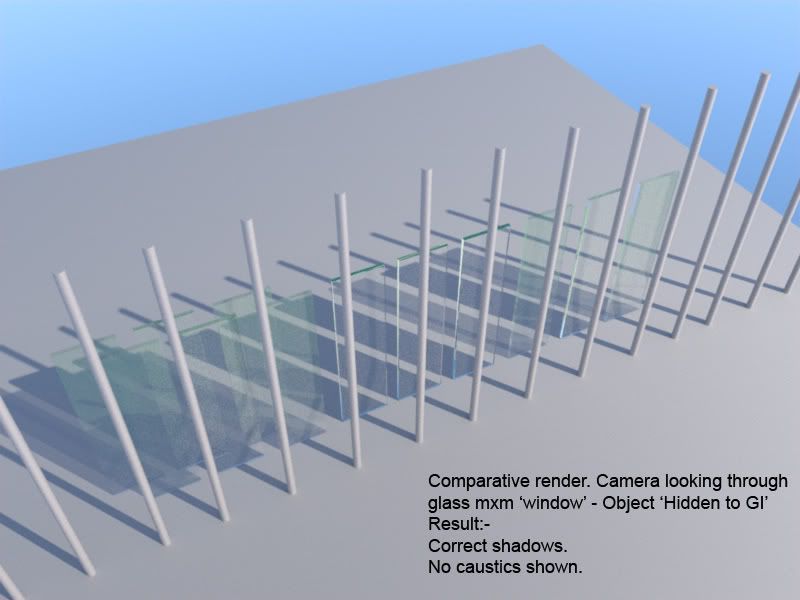
Conclusions:-
Using a camera 'window' with 'Hidden to GI' enabled, with strip all caustics from a scene.
Using a 50% Glass & AGS material, works fine for correct shadows and some refraction. (Check shadow lines running through glass and edge caustics, for refractiveness.)
Using a reduced reflective AGS & glass material, no reflective layer for AGS portion, works well but with no reflections.
More Glass % allows better refractions at the cost of incorrect shadows, in a Glass & AGS mixed mxm. Self shadows viewed through self are incorrect for increased glass %'s.
Tests runnning Glass mxm 'Hidden to GI' object, solves faster than AGS & Glass mix mxm, with 'Visible to GI' enabled.
I think user discretion and application, denotes method to be used, for optimum results.
If you want correct shadows, use 50% AGS & Glass mxm.
If you want correct sunlight, but no shadows added by the glass, use 'Hidden to GI' & Glass mxm.
AGS vs Glass vs Hidden to GI vs 50% AGS & Glass:-
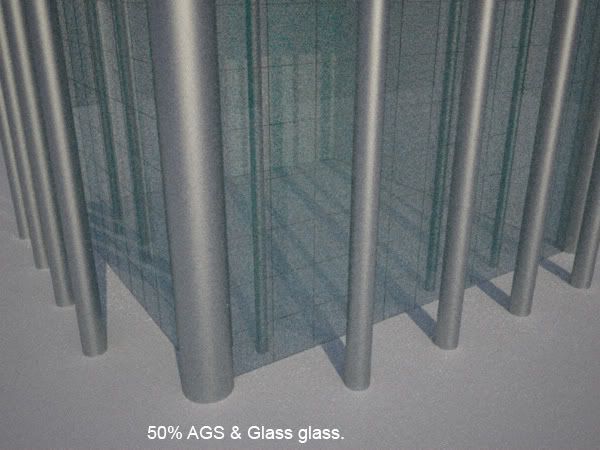
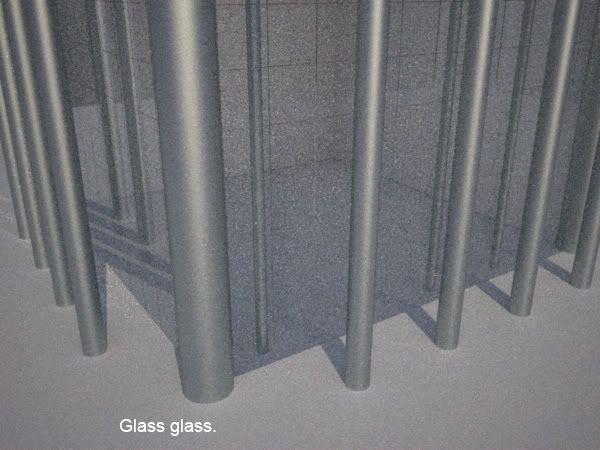
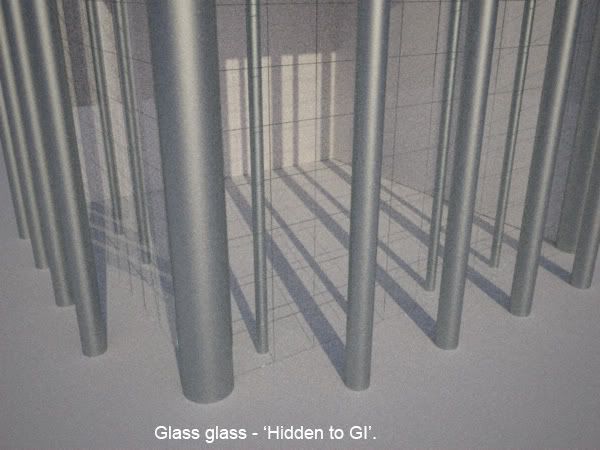
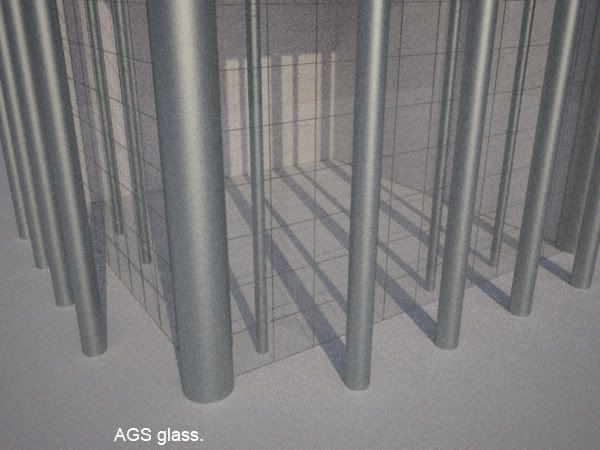
Swimming pool application, displaced geometry for water layer:-
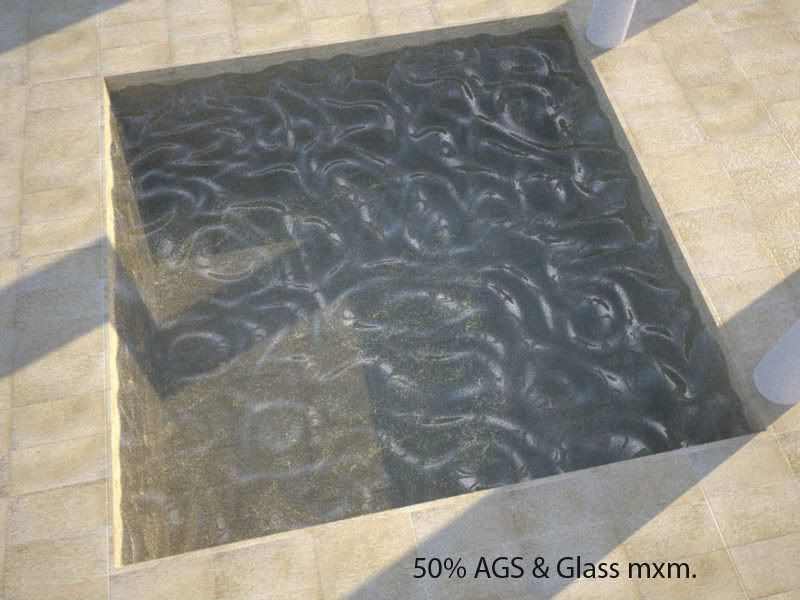
50% Glass & AGS mxm:- http://mxmgallery.maxwellrender.com/sea ... arch=ellis
________________________________________________________________________________________
 Original first post & tests:-
Original first post & tests:-
In case, like me, you didn't know that sunlight through glass now works. (To a certain degree.)
 You need to tick the 'Hidden from GI' box, in the object parameters window, for the glass object.
You need to tick the 'Hidden from GI' box, in the object parameters window, for the glass object.
I'd not seen this mentioned anywhere and only learnt about it yesterday, so please forgive me if you already know.
First tests work, sunlight can be seen through glass, from an exterior camera into an interior scene.
Shadows are correct and not produced, or added to by the glass object as before. Caustics are not working!
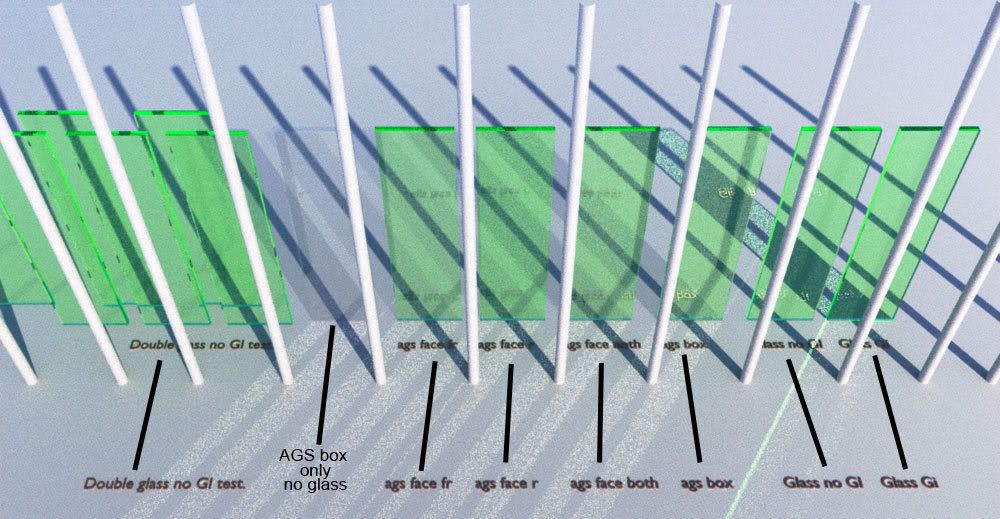
(See my post below for detailed explanation of this image.)
Maxwell Render 1.5.1
Tim.
Test:-

Comparison:-

Conclusions:-
Using a camera 'window' with 'Hidden to GI' enabled, with strip all caustics from a scene.
Using a 50% Glass & AGS material, works fine for correct shadows and some refraction. (Check shadow lines running through glass and edge caustics, for refractiveness.)
Using a reduced reflective AGS & glass material, no reflective layer for AGS portion, works well but with no reflections.
More Glass % allows better refractions at the cost of incorrect shadows, in a Glass & AGS mixed mxm. Self shadows viewed through self are incorrect for increased glass %'s.
Tests runnning Glass mxm 'Hidden to GI' object, solves faster than AGS & Glass mix mxm, with 'Visible to GI' enabled.
I think user discretion and application, denotes method to be used, for optimum results.
If you want correct shadows, use 50% AGS & Glass mxm.
If you want correct sunlight, but no shadows added by the glass, use 'Hidden to GI' & Glass mxm.
AGS vs Glass vs Hidden to GI vs 50% AGS & Glass:-




Swimming pool application, displaced geometry for water layer:-

50% Glass & AGS mxm:- http://mxmgallery.maxwellrender.com/sea ... arch=ellis
________________________________________________________________________________________
In case, like me, you didn't know that sunlight through glass now works. (To a certain degree.)
I'd not seen this mentioned anywhere and only learnt about it yesterday, so please forgive me if you already know.
First tests work, sunlight can be seen through glass, from an exterior camera into an interior scene.
Shadows are correct and not produced, or added to by the glass object as before. Caustics are not working!

(See my post below for detailed explanation of this image.)
Maxwell Render 1.5.1
Tim.

